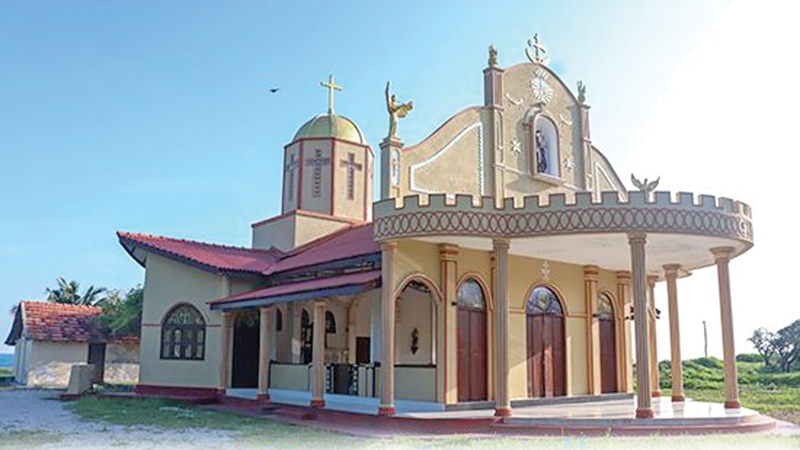- Navy prepares ground work for devotees
- Over 7,000 pilgrims expected from India
 At least 7,000 Catholic pilgrims both from Sri Lanka and neighbouring India are set to arrive on the Kachchativu Island to participate in the annual church feast that starts on February 23 and ends the following day.
At least 7,000 Catholic pilgrims both from Sri Lanka and neighbouring India are set to arrive on the Kachchativu Island to participate in the annual church feast that starts on February 23 and ends the following day.
As it has been the case in the past the Sri Lanka Navy is busy preparing the shrine and the surrounding areas for the feast and towards this end they are constructing sanitation and drinking water facilities, temporary shelters, roads, jetties, and ensuring electricity supply, all in preparation for the upcoming annual feast.
All these preparations are being carried out under the instructions and supervision of the Sri Lanka Navy Commander Vice Admiral Priyantha Perera and overseen by Commander Northern Naval Area, Rear Admiral Kanchana Banagoda.
Apart from that, the Navy is set to deploy lifesaving teams and medical teams with a temporary sick bay for the safety and security of the devotees attending the annual festival. The Navy has also undertaken the colour washing and repairs of the shrine and cleaning of the surrounding area and roads leading to the premises.
As excitement is building for what promises to be a memorable and meaningful event, the Navy has made all arrangements to ferry priests, Government officials, dignitaries, devotees, local and foreign journalists as well as equipment needed for the church mass, from Kankesanthurai and Kurikadduwan to the Kachchativu islet.
History of the church
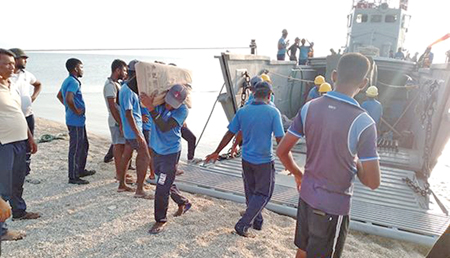 The church was built by a prosperous Indian Catholic (Tamilian) fisherman Srinivasa Padaiyachi in the early 20th century. The annual church festival runs for three days. Catholic priests from both India and Sri Lanka conduct the worship services (mass) and procession. Pilgrims from India are ferried mostly from Rameswaram.
The church was built by a prosperous Indian Catholic (Tamilian) fisherman Srinivasa Padaiyachi in the early 20th century. The annual church festival runs for three days. Catholic priests from both India and Sri Lanka conduct the worship services (mass) and procession. Pilgrims from India are ferried mostly from Rameswaram.
St. Anthony’s shrine is a unique place of worship as it shares the maritime borders of the two countries, and is a declared holy place by Sri Lanka. This island is also spelled as Kachchatheevu or Katchathivu.
Anthony of Padua
St. Anthony’s Catholic Shrine was dedicated in 1905, called in Tamil as Anthoniyar Koil and has over a 100-year-old tradition. This church is dedicated to Anthony of Padua, the patron saint of fishermen. No one is required to possess an Indian or a Sri Lankan passport to visit Kachchatheevu.
Jaffna Bishop Justin Gnanapragasam holds the administration responsibilities of this church.
Annual festival
In 2012, it was recorded that 3,768 pilgrims including 875 women attended St. Antony’s Church festival. According to sources, in 2012, 35 country boats and 106 mechanised boats ferried the pilgrims, mostly from Rameswaram, Thangatchimadam and Mandapam.
Indo-Sri Lankan relationship
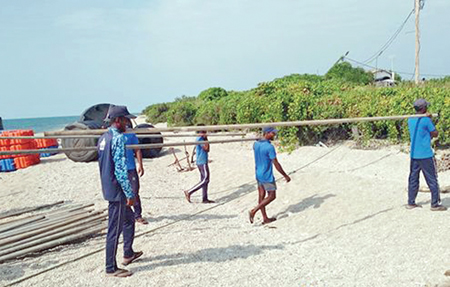 Permission to visit Kachchatheevu has been given to pilgrims after a gap of 27 years, since 1982. The festival which runs for 3 days remains as an umbilical cord for the Indo-Sri Lankan relationship.
Permission to visit Kachchatheevu has been given to pilgrims after a gap of 27 years, since 1982. The festival which runs for 3 days remains as an umbilical cord for the Indo-Sri Lankan relationship.
The priests from India and Sri Lanka conduct the Holy Mass and car procession. As many as 35 country boats and 106 mechanised boats ferry the pilgrims, mostly from Rameswaram.
This festival also gives the participants an opportunity to share hopes and renew with tradition, in an area shared harmoniously by people from both countries.
There is not a drop of drinking water on the island and the only structure is a decrepit church named after St. Antony, patron-saint of seafarers, to whom the feast is dedicated. It has is no shelter, no food, and nothing to sight-see, except the choppy blue waters of the Palk Straits all round.
Electricity, security, food, infrastructure, and internal transport for the devotees are all handled by the Sri Lanka Navy.
Controversy
Indian flags are not allowed to be carried during the festival. The fishermen boats, which had been allowed to carry the pilgrims, cannot fix the Indian flags on their boats for identification. There is also a diplomatic worry, that illegal immigrants use this festival to get transit to Sri Lanka or India, illegally.
External links
Indian Prime Minister Narendra Modi, in his speech in the Parliament during the No-Confidence debate on August 10, mentioned the island of Katchathivu.
Hitting out at Rahul Gandhi for his now-expunged Bharat Mata remarks, PM Modi said it was the Indira Gandhi Government that gave away Katchathivu to Sri Lanka in 1974.
“Katchathivu is an island between Tamil Nadu and Sri Lanka. Somebody gave it to another country. It happened under the leadership of Indira Gandhi,” he said. “Wasn’t that part of Maa Bharati there?” he quipped.
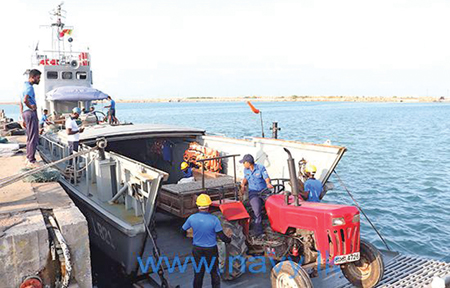 Today a part of Sri Lanka, Katchathivu remains a hot-button political issue in Tamil Nadu, for politicians across the aisle.
Today a part of Sri Lanka, Katchathivu remains a hot-button political issue in Tamil Nadu, for politicians across the aisle.
Just recently, ahead of President Ranil Wickremesinghe’s visit to New Delhi, Tamil Nadu Chief Minister MK Stalin wrote to PM Modi requesting him to retrieve the island.
“The transfer of Katchathivu to Sri Lanka, by the Union Government, without the State government’s consent, has deprived Tamil Nadu fishermen’s rights and adversely impacted their livelihoods,” Stalin’s letter said.
Volcanic eruption
The island is relatively new in the geological timescale, being the product of a 14-century volcanic eruption.
In the early medieval period, it was controlled by the Jaffna kingdom of Sri Lanka. In the 17th century, control passed to the Ramnad zamindari based out of Ramanathapuram, about 55km northwest of Rameswaram.
It became part of the Madras Presidency during the British Raj. But in 1921, both India and Sri Lanka, at the time British colonies, claimed Katchathivu in order to determine fishing boundaries. A survey marked Katchathivu in Sri Lanka, but a British delegation from India challenged this, citing ownership of the island by the Ramnad Kingdom.
This dispute was not settled until 1974.
What is the agreement now?
In 1974, Indira Gandhi made attempts to settle the maritime border between India and Sri Lanka, once and for all.
As a part of this settlement, known as the ‘Indo-Sri Lankan Maritime Agreement’, Indira Gandhi ‘ceded’ Katchathivu to Sri Lanka. At the time, she thought the island had little strategic value and that ceasing India’s claim over the island would deepen its ties with its southern neighbour.
Moreover, as per the agreement, Indian fishermen were still allowed to access Katchathivu “hitherto”. Unfortunately, the issue of fishing rights was not ironed out by the agreement. Sri Lanka interpreted Indian fishermen’s right to access Katchathivu to be limited to “rest, drying nets and for visit to the Catholic shrine without a visa”.
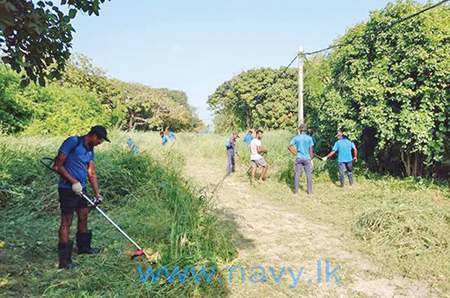 Another agreement in 1976, during the period of Emergency in India, barred either country from fishing in the other’s Exclusive Economic Zone. Again, Katchathivu lay right at the edge of the EEZs of either country, retaining a degree of uncertainty with regard to fishing rights.
Another agreement in 1976, during the period of Emergency in India, barred either country from fishing in the other’s Exclusive Economic Zone. Again, Katchathivu lay right at the edge of the EEZs of either country, retaining a degree of uncertainty with regard to fishing rights.
Terrorist war
However, between 1983 and 2009, the border dispute remained on the back burner as a bloody terrorist war raged in Sri Lanka.
With the Sri Lankan naval forces preoccupied with their task of cutting off supply lines of the LTTE based in Jaffna, incursions by Indian fishermen well into Sri Lankan waters were commonplace. Bigger Indian trawlers were especially resented as they would not only tend to overfish but also damage Sri Lankan fishing nets and boats.
In 2009, the fighting with the LTTE ended, and things dramatically changed. Colombo beefed up its maritime defences, and turned its focus to Indian fishermen. Facing a depletion of marine resources on the Indian side, they frequently enter Sri Lankan waters as they had been doing for years, but finally began facing consequences.
To date, the Sri Lankan Navy routinely arrests Indian fishermen the demand for Katchathivu is revived each time such an incident happens.
Tamil Nadu’s position on Katchathivu
Katchathivu was “given away” to Sri Lanka without consulting the Tamil Nadu state assembly. At the time itself, there were vehement protests against Indira Gandhi’s move, citing the historical control of the Ramnad Zamindari over the island and the traditional fishing rights of Indian Tamil fishermen.
In 1991, in the aftermath of India’s disastrous intervention in the Sri Lankan Civil War, the Tamil Nadu Assembly again sought retrieval of Katchathivu and restoration of fishing rights of Tamil fishermen. Since then, Katchathivu has perennially come up in Tamil politics.
In 2008, then AIADMK supremo, the late J. Jayalalitha, filed a petition in court saying Katchathivu could not be ceded to another country without a constitutional amendment. The petition argued the 1974 agreement had affected traditional fishing rights and livelihoods of Indian fishermen.
After becoming Chief Minister in 2011, she moved a resolution in the State Assembly and, in 2012, went to the Supreme Court asking her petition be expedited in the wake of increasing arrests of Indian fishermen by Sri Lanka.
However, the Union government’s position on Katchathivu has largely remained unchanged. It has argued that since the island had always been under dispute, “no territory belonging to India was ceded nor sovereignty relinquished.”
While the BJP, especially the party’s Tamil Nadu unit, has been vocal in its demand for retrieving Katchathivu for India, even the Narendra Modi Government has done little to actually act on Tamil politicians’ demands – there is little it can do.
As then-Attorney General Mukul Rohtagi had told the Supreme Court in 2014: “Katchathivu went to Sri Lanka by an agreement in 1974… How can it be taken back today? If you want Katchathivu back, you will have to go to war to get it back.”
Pix courtesy: Sri Lanka Navy






